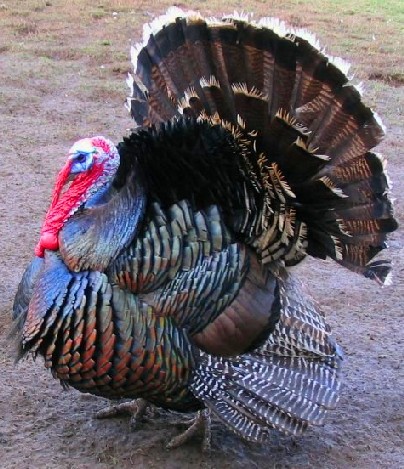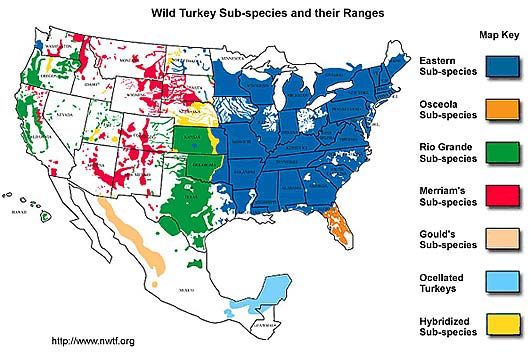Turkeys

Another bold animal specimen from the Americas – the Turkey. The Aztecs first domesticated the turkey and then what strange names the Europeans came up with: guineafowl, turkey fowl, turkey hen, turkey cock, and now just turkey. The wild turkey of North America and domesticated turkey originally of Mexico are not related to the guineafowl that they were named for. Those fowl were imported to Europe through Turkey the country. There is also a rumor that Columbus thought the turkey was part of the peacock family and he decided to call them “tuka” which is the word for peacock in the Tamil language of India. They are in fact the only poultry native to the Western Hemisphere.
Large domesticated turkeys have settled down to a life of leisure and are no longer able to spread their wings and fly away. Wild turkeys, even the fatter ones, are still able, just barely, to get up and go to escape predators. The largest turkey has been weighed at 86 lbs (39 kg). Wild turkeys forage for food like seeds, nuts, small insects and wild berries. At night all turkeys prefer to get up a ways off the ground into safer spots like low tree branches to sleep.

Turkeys have between 5000-6000 feathers in patterns called feather tracts. Feathers serve a variety of purposes; they keep the animal warm and dry, allow it to fly and make nice display ornaments for mating games. The head and upper part of the neck don’t have feathers, but there are little bumps of skin on the bare area.
Male turkeys strut around, fluff and puff their feathers and make gobble gobble noises on display for the possibly interested females.
